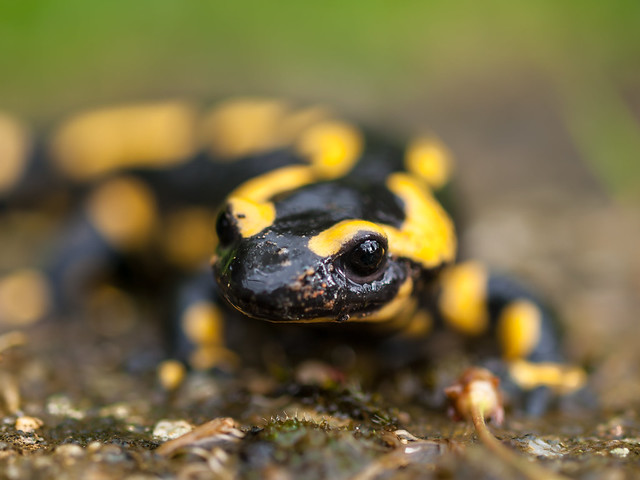Salamanders are one of the animals that make up the Kingdom Amphibia, particularly the order Caudata. There are around 400-500 species known worldwide and some of them are mostly found in the temperate lands of tropical South, Central America and all over the Northern hemisphere. In the past, salamanders have spread out in regions like British Columbia and central Labrador. If you want to know more about them, then below are some of the interesting facts about salamanders.
 |
| Photo by wwarby |
Average Size and Life Span
Salamanders vary in sizes. Some may only reach the size of 3.9 cm while others may reach up to the size of 180 cm. One of the smallest salamanders is the 4-toed salamander (Hemidactylium scutatum) that only reaches 5-9 cm. On the other hand, one of the largest is the mudpuppy (Necturus maculosus) that may reach a length of 43 cm. Salamander's life span also varies. The Chinese giant salamander can live for about 52 years while other salamanders may only reach a year or two.
General Description
Salamanders closely resemble the lizards. That is the main reason why they are typically mistaken as lizards. However, salamanders do not have the characteristics that lizards have. For example, salamanders do not have claws. Also, they have moist skin compared to lizards that have dry and scaly skin.
Generally, salamanders can't hear sounds; instead, they depend on the vibrations that they sense in the environment. These creatures are also voiceless, although some species have the ability to produce soft squeaks. Some of these species breathe through their pair of nostrils, while others breathe through gills or skin, or at times in combination. They often have movable eyelids and fine teeth. Their heart consists of 2 atria and one ventricle, making it a 3-chambered organ.
Behavior
Salamanders hibernate every year in order to survive. Since they cannot endure extremely cold temperatures, they need to dig underground. Aquatic salamanders are generally active at any time of the year while terrestrial salamanders are only active during night time, or when the land is moist or damp. Temperate seasons or warm period may immediately cause them dehydration.
Reproduction
There are two ways on how the eggs of the salamanders can be fertilized. It can be through external or internal fertilization. Internally, the male will drop jellylike capsule of sperms and the female will eventually take up these sperms through the lips of the cloaca. The eggs are fertilized as they are pushed out. On the other hand, external fertilization occurs when the egg is already outside the salamanders' body.
Nutrition
Generally, salamanders are carnivorous. Bigger salamanders are fond of eating earthworms and larvae of insects. Smaller species like small insects and small invertebrates while salamander larvae eat tadpoles.
Importance in the Environment
Salamanders are considered as great benefit in the field of agriculture and forest industry since they consume harmful insects that may destroy crops and plants. Salamanders are maintaining the balance of the food chain just like what other animals do. Without them, a break in the food chain can happen and problems related to plant industry may arise.
Salamanders today are continuously decreasing in number since a lot of universities and research laboratories catch them and make them subjects in their studies. That is why local laws are protecting these salamanders in order to keep their numbers in the wild. Take your part in the campaign of saving salamanders. Read more information about salamanders so you will know how to care for them properly.
Salamanders are interesting pets to keep. If you want to know more about salamanders , then visit our site at [ Article Source: EzineArticles |


No comments:
Post a Comment